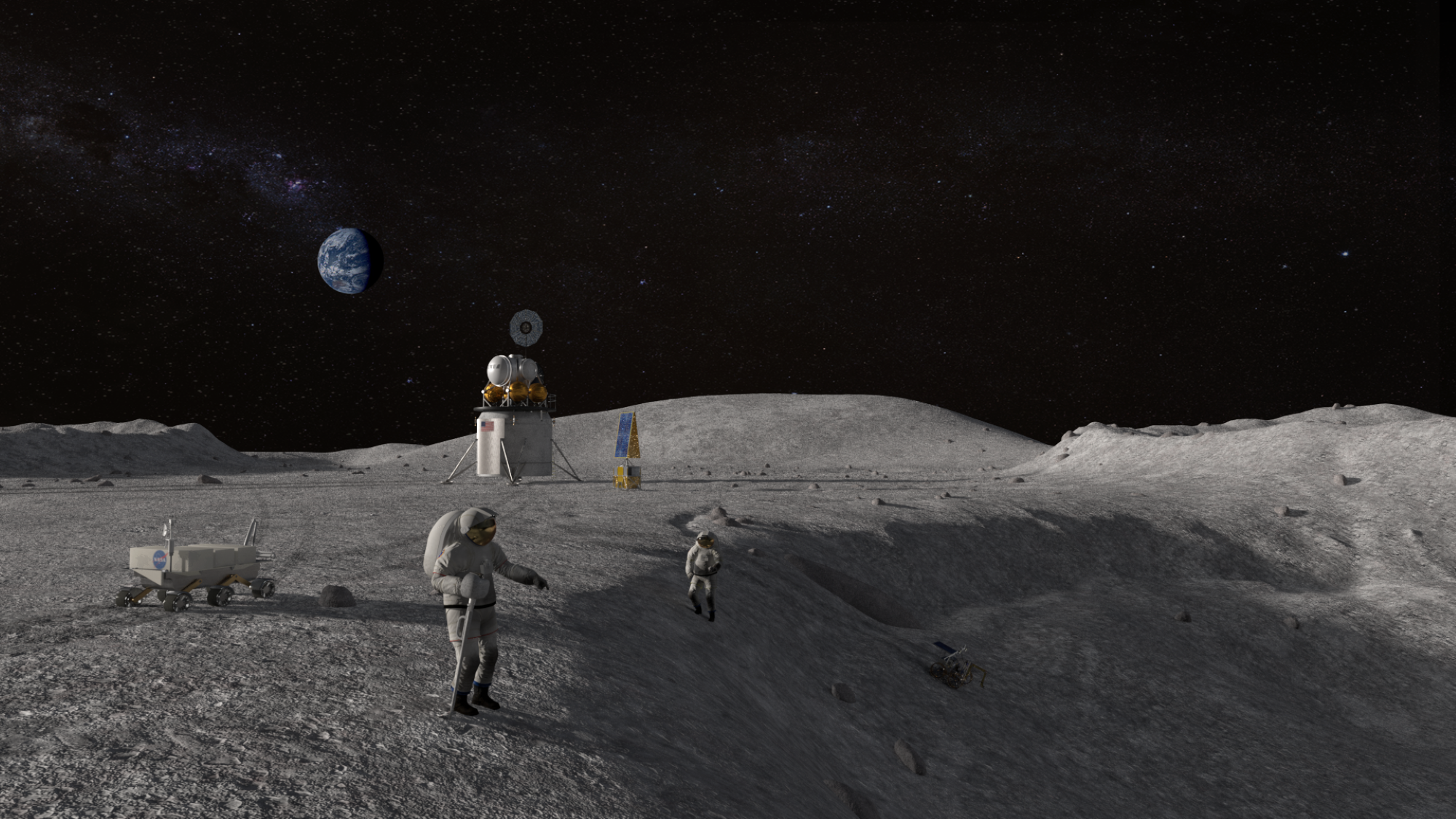

On December 6, 1968, Time magazine published an issue with a metaphor illustrated on the cover: a Soviet cosmonaut and an American astronaut were in a sprint to the moon. The actual space race had kicked off a decade earlier, when the Soviet Union launched Sputnik, the first artificial satellite, in 1957. It ended less than a year after Time published its cover, when US Apollo 11 astronauts landed on the moon on July 20, 1969. The excitement wore off quickly—the last humans to step foot on the moon, the crew of Apollo 17, did so in 1972. So far, no one has gone back.
But that’s changing. NASA is committed to landing astronauts on the moon again in 2025 as part of the space agency’s Artemis Program. China has plans to land humans on the moon by 2030. In the meantime, robotic missions to the moon are increasing: Russia’s endeavor to return to the moon for the first time in 47 years, the robotic Luna-25 mission, crashed this week, and India hopes to make its first soft landing there on August 23 with its Chandrayaan-3 lander.
With so many nations headed for the moon, including an increasingly aggressive if diminished Russia, is the world at the cusp of a second space race?
The temptation to reach for the historical space race as a model is understandable, but as long as we’re mapping history onto current events, it may not be the best guide, according to Cathleen Lewis, the Smithsonian National Air and Space Museums curator of international space programs. “In my opinion, this isn’t a new race,” she says. “If you want to use historical events, this is more of a gold rush.”
Or, more precisely, an ice rush. In 2018, scientists discovered water ice preserved in the deep, permanent shadows of polar craters. The US, China, Russia, and India are targeting portions of the lunar South Pole where that frozen resource should be. Water can be used to create rocket fuel or in lunar manufacturing. But it is heavy, and therefore expensive, to launch from Earth.
Space agencies “haven’t quite worked out” how they are going to use this ice, or for “what technology to what end,” Lewis says. “But everyone wants to get there because we now know there is water ice to be found.”
[Related on PopSci+: A DIY-rocket club’s risky dream of launching a human to the edge of space]
But it’s not just about the ice. The technological basis for all of this activity is entirely different than in the mid-20th century, Lewis points out. Back then, the US and the Soviet Union were developing the technology to go to the moon for the very first time.
President Kennedy backed the lunar program because his advisors convinced him the race was technologically winnable, she says. While this competition had a destination, it also referred to the way “the USSR was racing to the maximum capacity of their technological limits.”
The Soviets had difficulty developing vehicles powerful enough to launch a crewed mission to the moon. The US created the Saturn V rocket, a singularly capable technology that was the most powerful ever launched until the first flight of NASA’s new Space Launch System (SLS) rocket in late 2022.
Today, multiple nations and even private companies have the technological capability to send spacecraft to the moon. Space itself is now more crowded, too, host to satellites tied into terrestrial economies: carrying communications, providing guidance signals, and observing agricultural water and other resources on the ground.
The goal is no longer to achieve technological superiority. Instead, nations are rushing to acquire existing technologies that are becoming a prerequisite for economic independence and affluence. “This is part of being in a world in a mature space age, that these are no longer optional programs, they’re no longer pickup games, jockeying to see who’s first,” Lewis says. “These are essential, existential programs for 21st century existence.”
[Related: China’s astronauts embark on a direct trip to their brand new space station]
In this sense, the current wave of moon programs are different from those in the past because they are more internally focused on economies, rather than serving as a non-military proxy contest between two superpowers. China, Lewis notes, has scaled its exploration of space to match its economic development over the past 30 years.
However, that’s not to say it will remain that way. The historical Gold Rush, after all, led to conflict over that valuable resource. Once enough players are regularly operating on the moon with regularity, the opportunities for disputes will increase.
“Who gets to choose what we do with the moon?” Lewis asks. “We haven’t sorted out issues about who has mining and drilling rights.”
The Outer Space Treaty of 1967 forbids nations from making territorial claims on celestial bodies, but permits using resources there. Whether that use includes mining materials to sell for a profit on Earth is less clear. “We haven’t had to deal with that profit in space,” Lewis says. ”I’m glad I’m not an attorney who specializes in these sorts of things because it’s a part of it that makes my head ache.”
But there may be plenty of time for space lawyers and diplomats to figure that out. Because, when it comes to the moon, even gold rushes move slowly. “We’ve seen missions fail,” Lewis says, such as India’s Chandrayaan-2 mission that crashed on the moon in 2019. “The moon is a lot easier than it was 60 years ago, but it’s still difficult to get there.”
